Don’t even try to find this place with a satnav. I tap in the postcode and it takes me three miles and one mountain wide of the mark. In any case, there is no mobile telephone signal anywhere near the actual spot.
From the nearest bit of road (a tiny lane in itself), it’s a half-hour crawl by car along a winding and increasingly inhospitable, deeply rutted mountain track, zig-zagging up a rocky hillside, over a waterfall, across a grouse moor and over another river — avoiding a few very severe drops along the way.
And that is assuming that you have been given the code for the padlock on the gate and you are driving a vehicle at the very top end of the 4×4 spectrum. If not, it is a bracing two-hour walk or a long slog by mountain bike.
But then, that is the whole point of Skiddaw House in Cumbria — ‘the most remote home in England’. So say the estate agents now charged with selling it. Others have called it the ‘highest house’, too, at more than 1,500 ft.
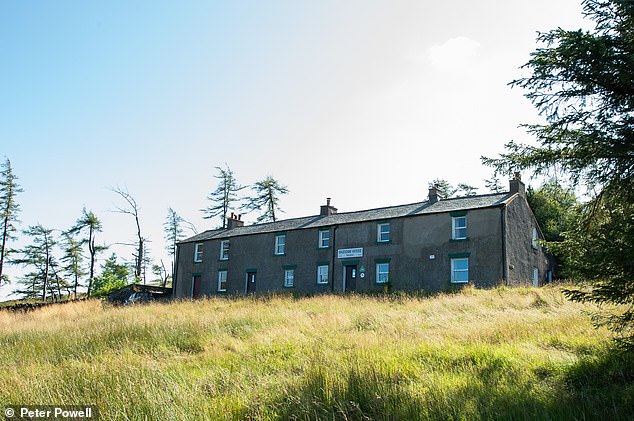
Hikers’ paradise: Skiddaw House in the Lake District (pictured), ‘the most remote home in England’, is on the market for £1.5 million
In recent days, there has been quite a bit of coverage about this year’s most unusual addition to the property market. So what is it actually like?
There is no estate agent to show me round today. It would take one of them the best part of a day to do a single viewing.
Promised ‘the ultimate off-grid bolthole’, I have come armed with boots, an Ordnance Survey map and a hired Land Rover, plus the agents’ particulars.
The vendors are positively rejoicing in the lack of mod-cons. This is a north-facing house with no mains electricity or gas or telephone or neighbours. All the water comes straight off the mountain.
There is no heating, though there is a wood-burning stove and hot water, courtesy of some solar panels on the roof — but these get precious little sunshine in winter. All cooking is done the propane gas canisters. There is no internet, meaning Twitter, Instagram and other social media is out of the question, praise the Lord.
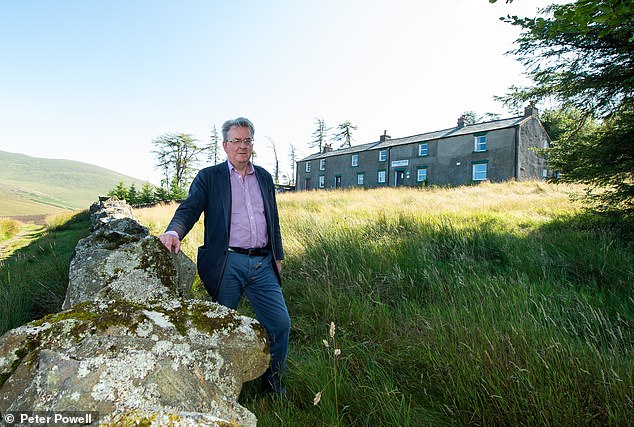
There is no estate agent to show me round today. It would take one of them the best part of a day to do a single viewing. Pictured: Robert Hardman checks out the property
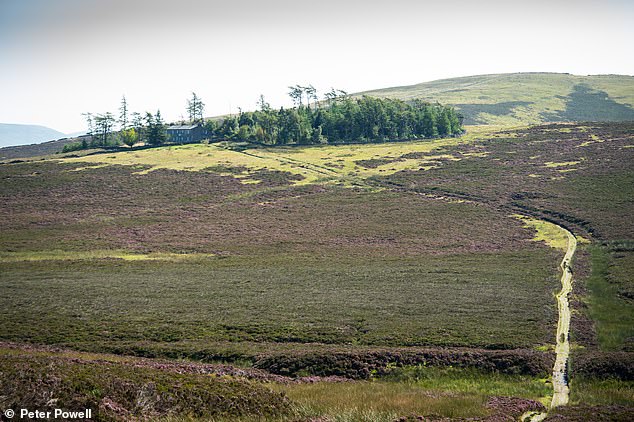
This is a north-facing house with no mains electricity or gas or telephone or neighbours or internet. (Pictured: The track leading to Skiddaw House)
It is four miles as the crow flies to the Lake District village of Bassenthwaite and the nearest pub, the Sun Inn. It is rather further than that for us non-crows. The nearest pint of milk is a five-mile trek in the opposite direction — to Keswick, down a path which is only accessible on foot or bike — and back again.
If you want to do the journey in your 4×4, then it is a 20-mile round trip. Allow at least a couple of hours.
And do not be ill. The only ambulance capable of reaching Skiddaw House is a chopper. Back in pre-aviation days, when a visitor to the house took a turn for the worse and died in February 1853, the Carlisle Journal reported that it required 16 men, two horses and a cart to get her body down to the funeral — and even then the coffin got stuck in a snowdrift.
The upside? On a sunny day, like the one I pick for this week’s visit, it is bewilderingly beautiful. For Skiddaw House overlooks nothing at all except Lake District fells in all directions. There is not a single dwelling or road or pylon or telegraph pole or wind turbine as far as the eye can see.
The only man-made structure at all is a stretch of ancient dry stone wall. Even now, at the height of the holiday season — with Lake District prices and popularity at an all-time high courtesy of Covid — this place is still well off the beaten track for most hikers. Over the course of a couple of hours, I spot precisely four human beings anywhere on the entire horizon.
We are, of course, in Wordsworth country, where the poet ‘wandered lonely as a cloud’. I wonder if he ever made it up here.
In winter, there is often no one at all. That is when the access track ices up, making the place completely inaccessible to all vehicles. It turns out the reason for the padlock on the gate is to stop people trying to drive up in unsuitable, underpowered vehicles which, even in normal weather, can simply slide on the steep shale and tumble over the edge, down the mountain. It has happened a couple of times.
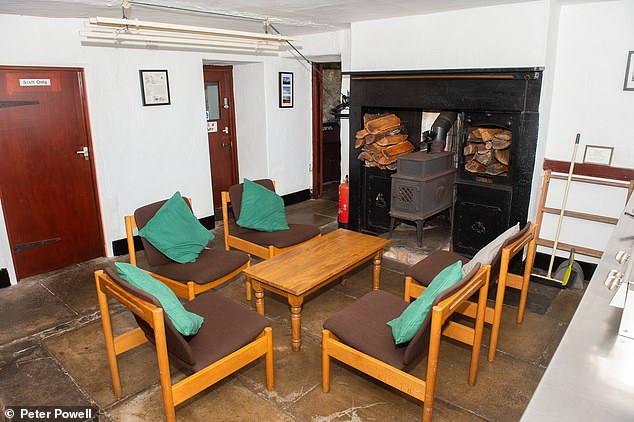
Skiddaw House is a much-loved hostel for hikers. Anyone can stay here for around £20 a night, and prior to the pandemic, around 2,500 people a year would trek over Skiddaw, Blencathra or Carrock Fell to spend a night here. (Pictured: The kitchen area)
In midwinter, the waterfall ices over and nothing can get through except a tank.
Yet the current residents, a young couple who run it as a hostel, adore the views and the fathomless, inky darkness which comes with not seeing a single light at night. ‘I actually look forward to winter,’ says Martin, who manages the place with his partner, Suzy. ‘For every bad day you get a few really amazing ones.’
His only contact with the outside world is a satellite link to check for online reservations.
So what is the asking price for this bracing solitude? Estate agents Mitchells of Cockermouth have a guide price of £1.5 million, though admit that there is nothing to compare it with. They call it a former aristocratic ‘shooting lodge’, which seems a little flattering for a plain, low-lying, concrete-rendered knock-through of two cottages.
And it comes with just three acres of land — little more than a postage stamp in this soaring, dramatic landscape of heather, crag, wildflower and grass.
However, it also sits in a location which has earned it a legion of followers all over the world.
For Skiddaw House is a much-loved hostel for hikers. Anyone can stay here for around £20 a night, although Covid restrictions mean that, for now, people must book in advance and in self-contained groups — up to 20 at a time.
They will find a friendly host providing a clean and homely berth with a log fire, cooking facilities, loos, a couple of showers, fresh sheets and even a little shop if any intrepid adventurers find themselves short of food (or drink).
Guests sleep in four bunk rooms — all named after birds and all with astounding views. They cook their own food but eat around a big communal table in a large kitchen.
With no TV or internet, evening entertainment usually consists of that time-honoured pleasure, fireside conversation, unless anyone is up to playing the two guitars by the bookcase in the ‘common room’.
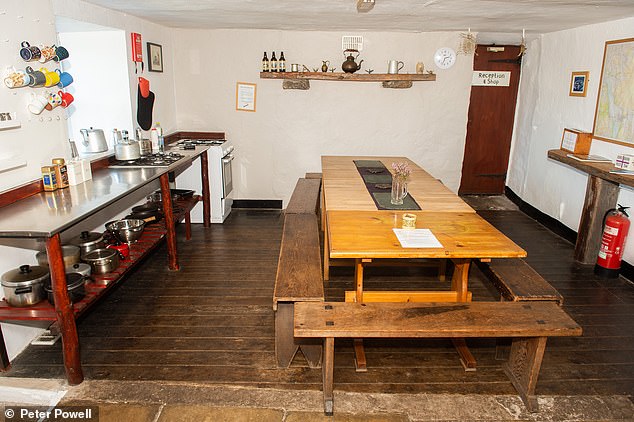
The current residents, a young couple, Martin and Suzy, both avid fell-runners, think nothing of a ten-mile round trip to town on foot for a pint of milk. (Pictured: The kitchen area)
You could have the party of the century up here and make all the noise you like. There are no neighbours to annoy. But since there is nowhere to plug in a sound system or an amplifier, that is not going to happen.
Now, the farmer who owns this place has decided he wants to sell the freehold and release some capital for other projects. For now, the tenant is a charity which operates the hostel and has another six years on the lease. After that, it will be up to the new owner to decide what happens next.
Since it sits slap bang in the middle of a protected Area of Outstanding Natural Beauty at the heart of a national park, development opportunities are limited.
Some walking groups have already expressed an interest in it and there have been a couple of enquiries from overseas. However, there is also a chance of Skiddaw House going back to what it has been for the best part of 200 years — a home.
It was built in the early 19th century by the very rich and very unuxorious 3rd Earl of Egremont, who was said to have sired 43 illegitimate children but no legitimate heir. His palatial main seat was Petworth House in Sussex, where he had ample room to accommodate his brood plus a steady stream of artists, including Turner and Constable.
The earl also had significant estates in Cumberland near his northern home at Cockermouth Castle. This included the 3,000-acre Skiddaw Forest. Sitting on mighty Skiddaw mountain — at 3,054 ft above sea level, it is the sixth-highest peak in England — this was good land for both farming sheep and shooting grouse.
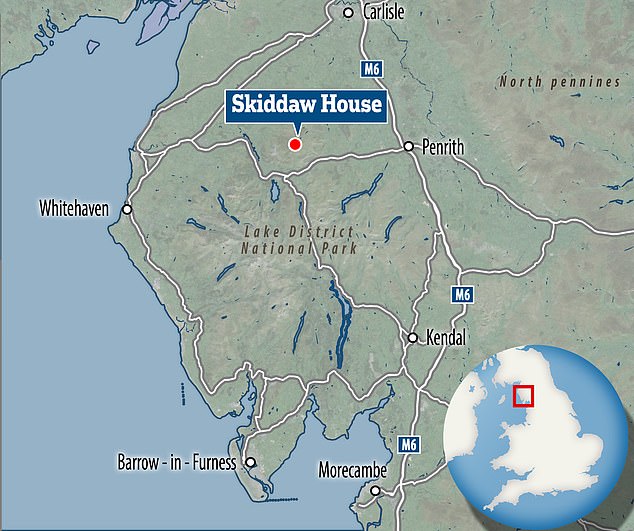
The upside? On a sunny day, like the one I pick for this week’s visit, it is bewilderingly beautiful. For Skiddaw House overlooks nothing at all except Lake District fells in all directions.
Skiddaw House was therefore built to house a gamekeeper to tend his Lordship’s sporting birds and a shepherd to look after the sheep. When the shooting season came around, the building would then be used to accommodate the earl and his shooting party.
On his death, Lord Egremont’s title passed to a nephew, but he split his lands between some of his many children. His Cumberland estates went to Lieutenant-Colonel Henry Wyndham, his second illegitimate son, who had fought gallantly at the Battle of Waterloo.
He was holding the line at Hougoumont Farm, a vital stronghold. Vastly outnumbered by Napoleon’s attacking force, Wyndham and his men famously managed to push them back and slam shut the courtyard gates, thus keeping the French at bay at a crucial moment. He sustained such terrible injuries that, so it was said, he never closed another door for the rest of his life.
Up on the Skiddaw Forest estate, a succession of tenants occupied the two cottages for a century and a half, though not without incident. As well as the woman who died in 1853 — she was a maternity nurse tending to the gamekeeper’s pregnant wife — there was a dreadful tale ten years later.
At a ‘shepherds’ meet’ held at the house, a nine-year-old boy called Tom Hodgson was goaded in to drinking so much rum and gin that he died — ‘howling like a wolf’ — of alcohol poisoning.
All these tales are included in a splendid little book called The Loneliest House In England, by John Martin, which sits on sale at the hostel. It explains how the house went into decline after World War II (when many aircraft crashed in to the fells hereabouts).
Whacked by death duties, the Wyndham family auctioned off much of their land in 1957. The 3,000 acres of Skiddaw Forest —including the two cottages and the mountain — failed to reach the reserve price of £4,250 but were sold privately to a local farmer.
Over the subsequent years, the cottages fell into disrepair. The last resident, a much-loved local shepherd called Pearson Dalton, retired down the mountain with his dogs, cat and nanny goat in 1969. The place was then used for occasional school camping trips, but eventually became derelict.
By the 1980s, there were smashed windows and sheep wandering inside and out.
But a dedicated hill-walker and builder from the south of England called John Bothamley had visions of a hostel for passing walkers. Assisted by a team of volunteers, he spent two years restoring it and by 1987, it had opened as a bunkhouse for trekkers.
Since then, it has closed, reopened and changed hands once more, but is thriving. That great chronicler of the fells, Alfred Wainwright, recorded and sketched it. Britain’s best-known climber, Sir Chris Bonington, has been to visit.
Since 2007, it has operated as a charity linked to the Youth Hostel Association and prior to the pandemic, around 2,500 people a year would trek over Skiddaw, Blencathra or Carrock Fell to spend a night here.
Though the numbers trickle to nothing during midweek winter months, the place is still a refuge — as it was last New Year when a father with two young sons got lost as dusk fell. He had been navigating with a mobile phone and lost his signal.
Martin provided them with torches and advice on how to get safely off the mountain.
‘Sometimes, you can go a week or two without seeing a soul,’ he says. He also points out that even in the depths of winter, when the track can be impassable for weeks, you are never ‘locked in’ entirely.
‘You can always just walk down the hill — or even ski,’ he says.
Both avid fell-runners, he and Suzy think nothing of a ten-mile round trip to town on foot.
Following the birth of their baby daughter, Jasmin, however, they are planning to move down in to the valley and will soon be handing the hostel over to a new manager for the rest of the lease.
After that, no one knows what will happen. The hiking world very much hopes the new freeholder will keep it as a hostel or educational field centre.
The estate agents recognise its shortcomings. ‘It won’t suit many,’ says Andrew Wright of Mitchells, ‘but there is simply nothing else like it.’
You certainly won’t be ordering from Amazon ever again . . .
Source link : https://www.dailymail.co.uk/news/article-9949027/Britains-isolated-home-Lake-District-views-die-1-5m.html












